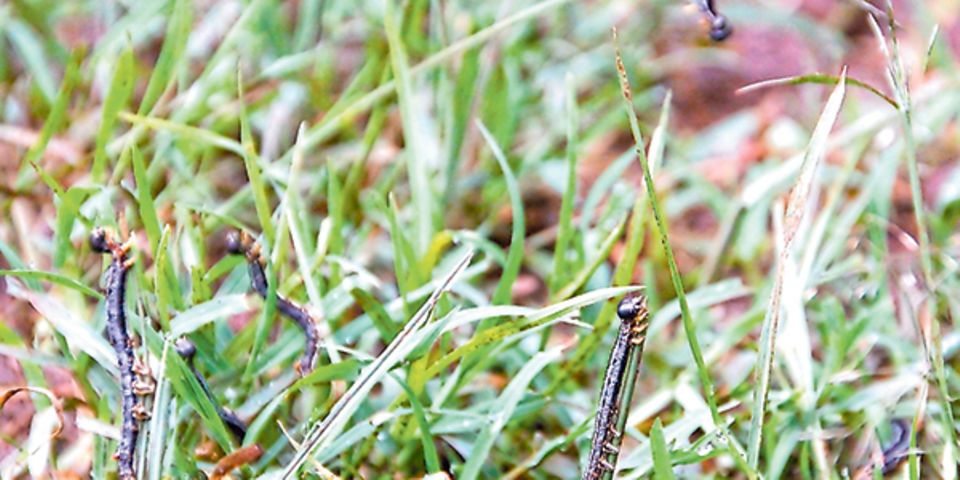Caterpillars have invaded some parts of Kajiado County, making farmers incur huge losses. During my daily routine, I met Florence, a spinach farmer in Kisaju.
The caterpillars have ravaged her crop to the extent that only the midribs remained in the plants. The spinach leaves are defoliated.
Some crops have what is known as the window effect, making them unattractive to customers. Caterpillar attacks on sukuma wiki and French beans have also been reported in several parts of the county.
The leaves of the French bean plants attacked have irregular holes while the pods have tunnels, with others having irregular shapes.
A farmer whose French beans land has been invaded by the caterpillar suffers for his produce can neither be sold locally nor exported. The most conspicuous symptom of the caterpillar invasion is leaf defoliation.
The caterpillar usually feeds on the lamina, leaving the plant stalk standing. Others leave the leaves with the window effect – gaping holes in the leaves.
At the base of the plant, one can easily notice the caterpillar’s waste products, known as fross. The cocoon is an indication of the presence of the pest.
One can easily see the moths flying about and shaking the leaves of the affected plants. The caterpillar is the larval stage of moths or butterflies. The farmer needs to be careful when identifying the kind of caterpillar species on his or her land.
They are identified by their worm-like soft bodies. The caterpillar is the most destructive stage of moths and butterflies.
They can ruin crops in a greenhouse or open field. Some attack fruits such as tomatoes. They include the African bollworm.
Young caterpillars start eating on the underside of the leaves. The larger ones can go to the extent of damaging flowers, fruits and young shoots.
SPRAY EARLY IN THE MORNING
The colour of the pest varies, from green to reddish-brown. When the caterpillar is disturbed, it raises its head and curls it under the front part of its body.
This is a unique behaviour of the caterpillar that assists in its identification. The damage to the crops mostly gets worse with the increase in the size of the caterpillar.
This is why farmers are advised to control it during the early stages of its growth. Caterpillar invasion is severe during rainy seasons. A few others are active during warm conditions.
Moths are nocturnal. This makes it very difficult to control them. Scouting for the caterpillars should be done early in the morning for best results.
One should scout both sides of the leaves in order to control the pest before it gets out of control. Spraying should therefore done early in the morning or late in the evening.
In a small kitchen garden, the farmer can pick the caterpillars by hand and kill them, especially if the invasion is low.
Insecticidal soap controls the caterpillars by suffocating them. To control the caterpillar, farm hygiene should be maintained.
Bushes act as breeding grounds for butterflies and moths and should be cleared. The use of biological products like Bacillus thuringiensis (Bt) helps control the pest too.
Bt is a bacterium which affects the digestive system of the caterpillar, killing the pest. Bacillus thuringiensis should be applied at the right time since it needs to be consumed by the pest for it to be effective. Neem oil and pyrethrin are also known to control the caterpillar effectively.
Some farmers use home-made chilly sprays to control them. This is cheap, effective and does not have a negative effect on the environment. Some birds feed on caterpillars, helping them control the pest.





